1 of 40
Download to read offline
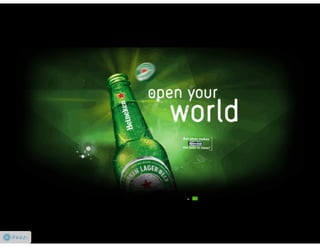
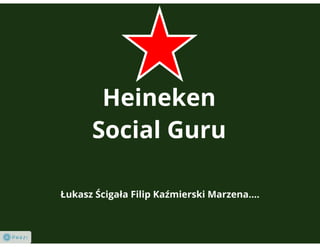







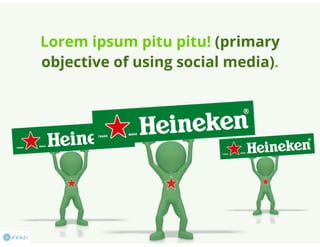
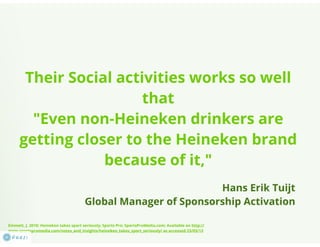

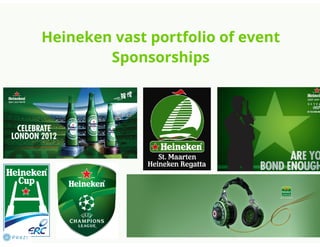

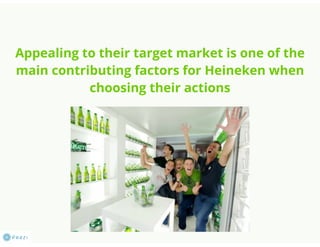

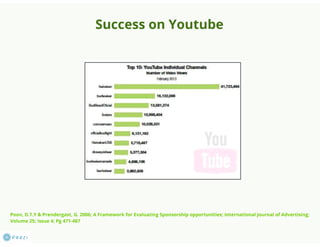

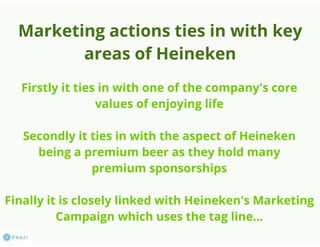




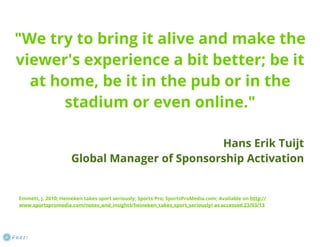

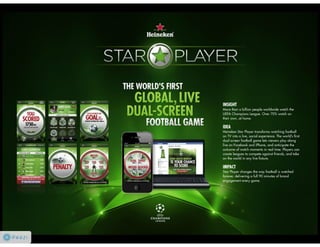

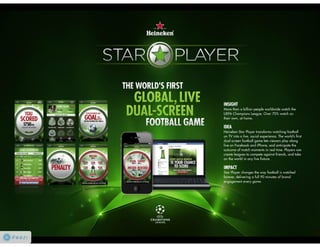

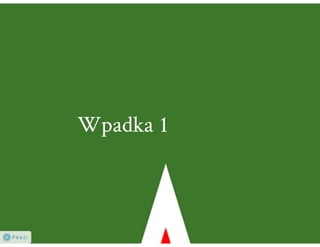










Ad
Recommended
Producing M Ms
Producing M Ms Melda Yildiz
╠²
This document discusses teaching mathematics through a multicultural lens. It defines key terms like math literacy and multicultural education. It provides examples of incorporating social justice issues and other cultures into math lessons. Challenges of teaching this approach are also outlined, along with resources and ideas for teaching math and multiculturalism.Whiskas Cat Food Market Research, Analysis & Recommendations
Whiskas Cat Food Market Research, Analysis & Recommendations Jaddan Bruhn
╠²
The document discusses research conducted on consumer attitudes towards environmentally sustainable pet food packaging. A survey found that while most shoppers aspire to buy green products, only a small percentage actually purchase green pet food. The research also examined a Swedish pet food brand that uses more sustainable packaging, finding it requires less shelf space and transportation while maintaining quality and cost. It recommends major brand Whiskas pursue sustainable packaging to gain a first mover advantage and opportunity to reposition itself as a premium brand.Planejamento de Trade Shopper Mkt | Pedigree e Wiskas Freelance | Strategy
╠²
[1] O documento apresenta o planejamento de marketing para as marcas Pedigree e Whiskas em 2014, incluindo estrat├®gias para canais especialistas e alimentares. [2] Dois conceitos criativos foram desenvolvidos com a miss├Żo de aumentar as vendas desses produtos. [3] As a├¦├Ąes propostas incluem concursos, distribui├¦├Żo de brindes e ativa├¦├Ąes em pontos de venda e parques para gerar visibilidade das marcas.Michelin PPT
Michelin PPTWallace Tai
╠²
The document outlines plans for a marketing campaign by Michelin to position itself as a performance tire brand. It begins with analyzing Michelin's competitors and identifying communication problems that prevent consumers from purchasing Michelin tires. Research in the form of surveys and interviews with target audiences, identified as premium driving pleasures individuals, provides insights. The campaign will disrupt the market by fulfilling the dream of these individuals to experience racing. A creative strategy and big idea are presented for an immersive 360 racing event called Michelin Pilot Sport Experience. The campaign will utilize executions including a teaser video with Ken Block, video commercials, and games to drive awareness, education and engagement leading up to a virtual reality competition.Whiskas presentation updated
Whiskas presentation updatedrebeccashackley
╠²
This document provides a history of Whiskas cat food, including that it was originally called Kal Kan foods but changed its name to Whiskas in 1988. It discusses Whiskas' advertising strategies over the years, which have used humor and portrayed cats' love for their owners. The document also outlines UK legislation regarding food claims and Whiskas' dealings with the Advertising Standards Authority regarding preference claims.Tire Production Process
Tire Production ProcessRubber & Tyre Machinery World
╠²
The document outlines the meticulous process of tire production, detailing key stages such as compounding, calendaring, and curing, which involve mixing raw materials and shaping the tire components. It emphasizes the importance of quality control at each stage, including sampling, inspection, and backward traceability of materials through barcoding. Overall, the document highlights the intricate methods and goals aimed at ensuring high-performance, consistent quality in tire manufacturing.Smirnoff Presentation
Smirnoff PresentationPoorva Khatri
╠²
Smirnoff is a globally recognized vodka brand owned by Diageo, originating from Russia, and has an ABV ranging from 30% to 50%. The brand offers a diverse range of flavored vodkas and malt beverages, available in various countries, with distinctive aromas and tasting notes that cater to different preferences. Pricing for Smirnoff products varies, with 750ml bottles typically priced around Rs. 590 to Rs. 1,090 in India.NUTELLA
NUTELLAszwach
╠²
(1) The document discusses Nutella brand positioning and consumer insights. (2) It positions Nutella as a deliciously unique hazelnut spread that can be part of a balanced breakfast, with a target group of parents with children ages 5-13. (3) The brand personality is described as positive, emotional, active, natural, fun, and social, with core values of quality, family, pleasure and naturalness.Condom Manufacturing
Condom ManufacturingHindustan Latex Family Planning Promotion Trust (HLFPPT)
╠²
This document summarizes the 7-step process for manufacturing condoms at an HLL factory in Karnataka, India. The steps include: 1) mixing and grinding latex, 2) dipping molds in the latex mixture, 3) cooling, drying, and stripping the condoms from the molds, 4) quality control checks including visual inspection and pinhole testing, 5) more detailed pinhole testing, 6) bursting tests to ensure the condoms can hold pressure, and 7) lubrication and packaging of the condoms. On average, the factory produces 8 lakh (800,000) condoms per day through this thorough process to ensure quality and safety.Oreos
Oreosmayj
╠²
The Oreo cookie was developed by Nabisco in 1912 in New York City, originally coming in lemon meringue and cream flavors in mound shapes. By the 1920s, only the cream filling remained popular so lemon was discontinued. The modern sandwich cookie design was created in 1952 featuring the Nabisco logo. Oreos are similar to Hydrox cookies from 1908, though Hydrox were withdrawn in 1999 due to losing market share to Oreos, before being reintroduced in 2008. Oreo varieties now include double stuffed, seasonal flavors, and cakesters.Production Process Wood Pellet From Wood Biomass
Production Process Wood Pellet From Wood BiomassJFE Project
╠²
The document provides a comprehensive overview of the wood pellet production process, detailing different types of pellets, their quality classes, and the significance of moisture content in the production stages. It discusses the importance of selecting appropriate raw materials and conditions for efficient pelletization, including drying techniques and machinery used. The text also includes global statistics on wood pellet production and emphasizes the increasing demand for wood pellets in the market.Manufacturing.Ppt
Manufacturing.Pptviralshah48
╠²
The document discusses India's manufacturing sector and its value proposition. It notes that India has a large domestic market, low-cost skilled labor, and favorable government policies that have helped manufacturing contribute significantly to the economy and make India an attractive destination for foreign investment. The manufacturing sector is expected to grow rapidly over the next decade, with key sectors like automotive, pharmaceuticals, and food processing driving growth.Production Presentation
Production Presentationahmad bassiouny
╠²
Production involves turning raw materials into finished products that can then be distributed to consumers. There are several types of production methods:
- Job production involves producing single products in a craftsman-like manner and can be expensive and time-consuming.
- Batch production involves making similar products in batches using the same equipment. Workers can specialize in tasks.
- Flow production continuously produces identical products on an assembly line, using more machinery. Workers repeat the same tasks.Manufacturing Processes - Tyre
Manufacturing Processes - TyreSateesh Kumar
╠²
The document discusses the key processes involved in tyre manufacturing, including compounding and mixing rubber and other materials, milling and calendaring the rubber into sheets, extruding tread and other components, assembling the components on a tyre building machine, curing and vulcanizing the assembled tyre, and final inspection and finishing of the cured tyre. Tyre manufacturing requires combining many raw materials like various rubber compounds, carbon black, fabric, and steel wires and cables through mixing, shaping, building, and curing processes to produce the final product.Steps involved in Sugar Production
Steps involved in Sugar Productionmustafeex
╠²
The document summarizes the production process for sugar from sugarcane. It begins with cleaning and slicing the sugarcane, then extracting the juice. The juice is purified, evaporated to concentrate it, and crystallized to form raw sugar. The raw sugar is further refined by removing molasses and other impurities through centrifugation and filtration. The refined sugar crystals are then separated by size and packaged. The sugar industry is an important part of Pakistan's economy but faces challenges that need to be addressed to ensure its viability.Factors of production powerpoint presentation
Factors of production powerpoint presentationGift Zodwa Pheeha
╠²
This document defines and provides examples of the four factors of production:
1) Natural resources, which are fixed supplies found in nature like land, water, forests, and cannot be renewed. Examples include oil and minerals.
2) Entrepreneurship, which combines the factors of production to produce goods and services. An entrepreneur takes risks and is motivated.
3) Labor, which is the mental and physical effort of people involved in a business. Examples include mineworkers and teachers.
4) Capital, which includes manufactured resources like machines, tools, and buildings needed to produce other goods and services. Capital can also refer to the money used to start a business. Examples include factories, offices, andPresentation business michelin
Presentation business michelinAnge Baks
╠²
The document discusses Michelin, a tire and mobility company. It provides details on Michelin's history, leadership, organizational structure, strategic business units which include tires, tourism and navigation products. There is an analysis of Michelin's tire production rates, manufacturing process, internal financial situation, and external competitive environment. Key competitors in the tire industry like Bridgestone and Goodyear are also discussed. Government regulations and the potential for new competitors entering the Asian market are noted as influences in Michelin's industry environment.Snickers chocolate presentation
Snickers chocolate presentationElie Obeid
╠²
Mars, founded in 1920, launched Snickers, which has become the most popular chocolate bar worldwide, selling over 15 million units daily with annual sales of about $424 million. The brand employs a humorous marketing campaign and partnerships with diverse suppliers to boost accessibility and sales, significantly increasing volume during its Super Bowl debut. In response to health concerns, Mars has introduced a calorie cap on its products while announcing initiatives to support women in cocoa development.Tyre Industry Analysis
Tyre Industry AnalysisSoupa Soundararajan
╠²
The document provides an overview of the Indian tyre industry. It discusses the origins and growth of the industry since 1926. It notes that the industry now employs nearly 1 million people directly and indirectly. The industry is dominated by large organized players but the unorganized sector remains significant for bicycle tires. The document also outlines some key trends, segments, demand drivers, exports, concerns and opportunities for the Indian tire industry.Complete ppt of cadbury by KIRAN SHAUKAT
Complete ppt of cadbury by KIRAN SHAUKATKiran Shaukat
╠²
Cadbury is a global confectionery company with annual revenues of $50 billion. Its vision is of a peaceful, equitable society based on social justice. Cadbury's mission is to deliver quality products. It has many product lines including Cadbury Dairy Milk, Cadbury Roses, and Cadbury Drinking Chocolate. Cadbury's strategies include emphasizing quality, launching innovative products, and communicating the benefits of its products through affordable advertising.Types of production processes
Types of production processesAnupam Kumar
╠²
The document discusses different types of production processes. There are four main types: job shop production, batch production, mass production, and continuous/flow production. Job shop production involves unique custom products in low volumes. Batch production groups similar products into batches. Mass production focuses on high volumes of standardized products. Continuous production involves a linear and automated process with no backtracking.Sugar manufacturing process
Sugar manufacturing processNajja Tariq
╠²
This document provides an overview of the sugarcane processing and sugar production process. It details each step from harvesting sugarcane to processing it in sugar mills to extract the juice, and then refining the juice to produce raw and refined sugar. The key steps involve crushing the sugarcane, extracting and clarifying the juice, evaporating and crystallizing it to produce raw sugar, and then further processing the raw sugar through affination, melting, purification and recrystallization to produce refined white sugar. Factors like temperature, moisture, light and compression are important for proper storage of sugar.More Related Content
Viewers also liked (14)
Condom Manufacturing
Condom ManufacturingHindustan Latex Family Planning Promotion Trust (HLFPPT)
╠²
This document summarizes the 7-step process for manufacturing condoms at an HLL factory in Karnataka, India. The steps include: 1) mixing and grinding latex, 2) dipping molds in the latex mixture, 3) cooling, drying, and stripping the condoms from the molds, 4) quality control checks including visual inspection and pinhole testing, 5) more detailed pinhole testing, 6) bursting tests to ensure the condoms can hold pressure, and 7) lubrication and packaging of the condoms. On average, the factory produces 8 lakh (800,000) condoms per day through this thorough process to ensure quality and safety.Oreos
Oreosmayj
╠²
The Oreo cookie was developed by Nabisco in 1912 in New York City, originally coming in lemon meringue and cream flavors in mound shapes. By the 1920s, only the cream filling remained popular so lemon was discontinued. The modern sandwich cookie design was created in 1952 featuring the Nabisco logo. Oreos are similar to Hydrox cookies from 1908, though Hydrox were withdrawn in 1999 due to losing market share to Oreos, before being reintroduced in 2008. Oreo varieties now include double stuffed, seasonal flavors, and cakesters.Production Process Wood Pellet From Wood Biomass
Production Process Wood Pellet From Wood BiomassJFE Project
╠²
The document provides a comprehensive overview of the wood pellet production process, detailing different types of pellets, their quality classes, and the significance of moisture content in the production stages. It discusses the importance of selecting appropriate raw materials and conditions for efficient pelletization, including drying techniques and machinery used. The text also includes global statistics on wood pellet production and emphasizes the increasing demand for wood pellets in the market.Manufacturing.Ppt
Manufacturing.Pptviralshah48
╠²
The document discusses India's manufacturing sector and its value proposition. It notes that India has a large domestic market, low-cost skilled labor, and favorable government policies that have helped manufacturing contribute significantly to the economy and make India an attractive destination for foreign investment. The manufacturing sector is expected to grow rapidly over the next decade, with key sectors like automotive, pharmaceuticals, and food processing driving growth.Production Presentation
Production Presentationahmad bassiouny
╠²
Production involves turning raw materials into finished products that can then be distributed to consumers. There are several types of production methods:
- Job production involves producing single products in a craftsman-like manner and can be expensive and time-consuming.
- Batch production involves making similar products in batches using the same equipment. Workers can specialize in tasks.
- Flow production continuously produces identical products on an assembly line, using more machinery. Workers repeat the same tasks.Manufacturing Processes - Tyre
Manufacturing Processes - TyreSateesh Kumar
╠²
The document discusses the key processes involved in tyre manufacturing, including compounding and mixing rubber and other materials, milling and calendaring the rubber into sheets, extruding tread and other components, assembling the components on a tyre building machine, curing and vulcanizing the assembled tyre, and final inspection and finishing of the cured tyre. Tyre manufacturing requires combining many raw materials like various rubber compounds, carbon black, fabric, and steel wires and cables through mixing, shaping, building, and curing processes to produce the final product.Steps involved in Sugar Production
Steps involved in Sugar Productionmustafeex
╠²
The document summarizes the production process for sugar from sugarcane. It begins with cleaning and slicing the sugarcane, then extracting the juice. The juice is purified, evaporated to concentrate it, and crystallized to form raw sugar. The raw sugar is further refined by removing molasses and other impurities through centrifugation and filtration. The refined sugar crystals are then separated by size and packaged. The sugar industry is an important part of Pakistan's economy but faces challenges that need to be addressed to ensure its viability.Factors of production powerpoint presentation
Factors of production powerpoint presentationGift Zodwa Pheeha
╠²
This document defines and provides examples of the four factors of production:
1) Natural resources, which are fixed supplies found in nature like land, water, forests, and cannot be renewed. Examples include oil and minerals.
2) Entrepreneurship, which combines the factors of production to produce goods and services. An entrepreneur takes risks and is motivated.
3) Labor, which is the mental and physical effort of people involved in a business. Examples include mineworkers and teachers.
4) Capital, which includes manufactured resources like machines, tools, and buildings needed to produce other goods and services. Capital can also refer to the money used to start a business. Examples include factories, offices, andPresentation business michelin
Presentation business michelinAnge Baks
╠²
The document discusses Michelin, a tire and mobility company. It provides details on Michelin's history, leadership, organizational structure, strategic business units which include tires, tourism and navigation products. There is an analysis of Michelin's tire production rates, manufacturing process, internal financial situation, and external competitive environment. Key competitors in the tire industry like Bridgestone and Goodyear are also discussed. Government regulations and the potential for new competitors entering the Asian market are noted as influences in Michelin's industry environment.Snickers chocolate presentation
Snickers chocolate presentationElie Obeid
╠²
Mars, founded in 1920, launched Snickers, which has become the most popular chocolate bar worldwide, selling over 15 million units daily with annual sales of about $424 million. The brand employs a humorous marketing campaign and partnerships with diverse suppliers to boost accessibility and sales, significantly increasing volume during its Super Bowl debut. In response to health concerns, Mars has introduced a calorie cap on its products while announcing initiatives to support women in cocoa development.Tyre Industry Analysis
Tyre Industry AnalysisSoupa Soundararajan
╠²
The document provides an overview of the Indian tyre industry. It discusses the origins and growth of the industry since 1926. It notes that the industry now employs nearly 1 million people directly and indirectly. The industry is dominated by large organized players but the unorganized sector remains significant for bicycle tires. The document also outlines some key trends, segments, demand drivers, exports, concerns and opportunities for the Indian tire industry.Complete ppt of cadbury by KIRAN SHAUKAT
Complete ppt of cadbury by KIRAN SHAUKATKiran Shaukat
╠²
Cadbury is a global confectionery company with annual revenues of $50 billion. Its vision is of a peaceful, equitable society based on social justice. Cadbury's mission is to deliver quality products. It has many product lines including Cadbury Dairy Milk, Cadbury Roses, and Cadbury Drinking Chocolate. Cadbury's strategies include emphasizing quality, launching innovative products, and communicating the benefits of its products through affordable advertising.Types of production processes
Types of production processesAnupam Kumar
╠²
The document discusses different types of production processes. There are four main types: job shop production, batch production, mass production, and continuous/flow production. Job shop production involves unique custom products in low volumes. Batch production groups similar products into batches. Mass production focuses on high volumes of standardized products. Continuous production involves a linear and automated process with no backtracking.Sugar manufacturing process
Sugar manufacturing processNajja Tariq
╠²
This document provides an overview of the sugarcane processing and sugar production process. It details each step from harvesting sugarcane to processing it in sugar mills to extract the juice, and then refining the juice to produce raw and refined sugar. The key steps involve crushing the sugarcane, extracting and clarifying the juice, evaporating and crystallizing it to produce raw sugar, and then further processing the raw sugar through affination, melting, purification and recrystallization to produce refined white sugar. Factors like temperature, moisture, light and compression are important for proper storage of sugar.